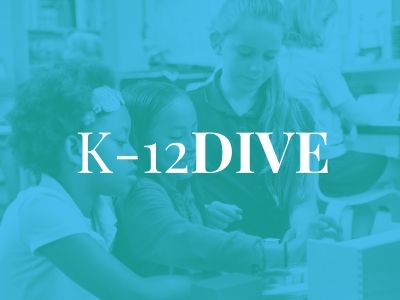At any Distance: Listening to the New Education Ecosystem
Topics

Today’s learners face an uncertain present and a rapidly changing future that demand far different skills and knowledge than were needed in the 20th century. We also know so much more about enabling deep, powerful learning than we ever did before. Our collective future depends on how well young people prepare for the challenges and opportunities of 21st-century life.
Where we learn will teach us how we learn. What does that mean in a time of school building closures?
“What country, friend, is this?”
–Shakespeare, Twelfth Night, Act 1 Scene 2
Frank Zappa tells a story in his autobiography about producing Captain Beefheart’s masterpiece, Trout Mask Replica. Initially,rather than going into a studio, he used portable recording gear (rare at the time) and strung wires through the band’s house, recording the drums in one room, the winds in another, the vocals in the bathroom, etc. Thus, when all of these signals came from all of these mics in all of these rooms, to one master tape—the final recording would be a recording of a space that didn’t exist, because it would be a synthesis of all of the places. The master tape would be a document of a new place.
I thought about this a few days ago when I decided to stop using the term, “Remote Learning,” for whatever-the-heck it is we’re going through right now. I started using that term at the beginning of March, with the goal of centering the learner and pushing back against constructions like “Remote Teaching” or “Distance School” or “Online Education.” Then it struck me that “remote learning” is also an inadequate nom du phénomène because however remote or alienated everyone—kids, parents, teachers, leaders—might feel, the learning is happening in the same place it always has been. Inside the kid.
I find the Zoom Era to be a wonderful reaffirmation of the most important idea that we’ve always known about education and choose always (almost) to minimize:
Relationships are the core of what we call education.
We are forced to awkwardly and enthusiastically construct new ways toward each other, and we are re-discovering that relationships are education. It’s like a conversation. At any one moment, the talking happens on one end. The listening on the other. And the in-between place both makes this possible and makes the two acts become one. What happens there could be called teachinglearning.
What is that new teachinglearning place? The place between? It’s a worthwhile question. In Twelfth Night, Viola, washed up on shore after being shipwrecked, asks, “What country, friend, is this?” The ship’s captain tells her, “This is Illyria.” She responds, “And what should I do in Illyria?” Without knowing where she was—the place—she could not know what was possible.
In our piece, A Conversation about Education as an Ecosystem, Cheryl Ka‘uhane Lupenui and I stressed the importance of place in education. In Hawai‘i, the elders said, “Where you live will teach you how to live.” We extrapolated to, “Where you teach will teach you how to teach.” and, of course, “Where you learn will teach you how to learn.” Seeing education within its ecosystem, surfacing its complexity, interdependence, and mutual agency is necessary if we wish to be pedagogically effective, culturally just, and personally kind.
These aren’t new ideas. I asked Cheryl what this new teachinglearning place might be. She wrote, “Perhaps it is the realm of Papahulilani or Papahānaumoku as would be seen from one Hawaiian perspective:”
Papahulilani is the space from above the head to where the stars sit. It is inclusive of the sun, moon, stars, planets, winds, clouds, and the measurement of the vertical and horizontal spaces of the atmosphere. Papahānaumoku moves from the embryonic state of all life forces to death. It is the birthing cycle of all flora and fauna inclusive of man. It is the process of investigating, questioning, analyzing and reflecting upon all things that give birth, regenerate and procreate.*
If the Zappa reference, the Shakespeare, and the Hawaiian stories haven’t already signaled it to you, this blog post is going off the beaten path, because all of us are going off the beaten path. The school building, a feature of every polity in America, allowed us the illusion that school (a proxy for “education”) existed separately from the people in it. I’m not sure why we wanted to hold that illusion. The new ecosystem of distance is forcing us to ask fundamental questions.
In the assessment community we’re wondering what sort of evidence one can gather about a kid’s learning nowadays. How do we assess kids? How do we guarantee validity and reliability? What about accountability? Does the meaning of those words change in this new place? Those are good questions. Here are some others. How can we act fairly and equitably? How can we do no harm? How do we know kids are safe and okay? How do we know kids are learning? How do we know?
Now—as always—the answer is to listen to the ecosystem, all of the people in it, the structures, the biases, the things it makes easy, the things it makes hard. Listen and be in relationship to it, rather than being extractive or commanding. Where we teachlearn will teach us how to teachlearn—if we are willing to watch, listen, be surprised, and adapt.
*In a later email, Cheryl writes, “The papaku makawalu framework from which I shared papahulilani and papahānaumoku (there is another papa, papahulihonua) comes from the Edith Kanaka‘ole Foundation.”




